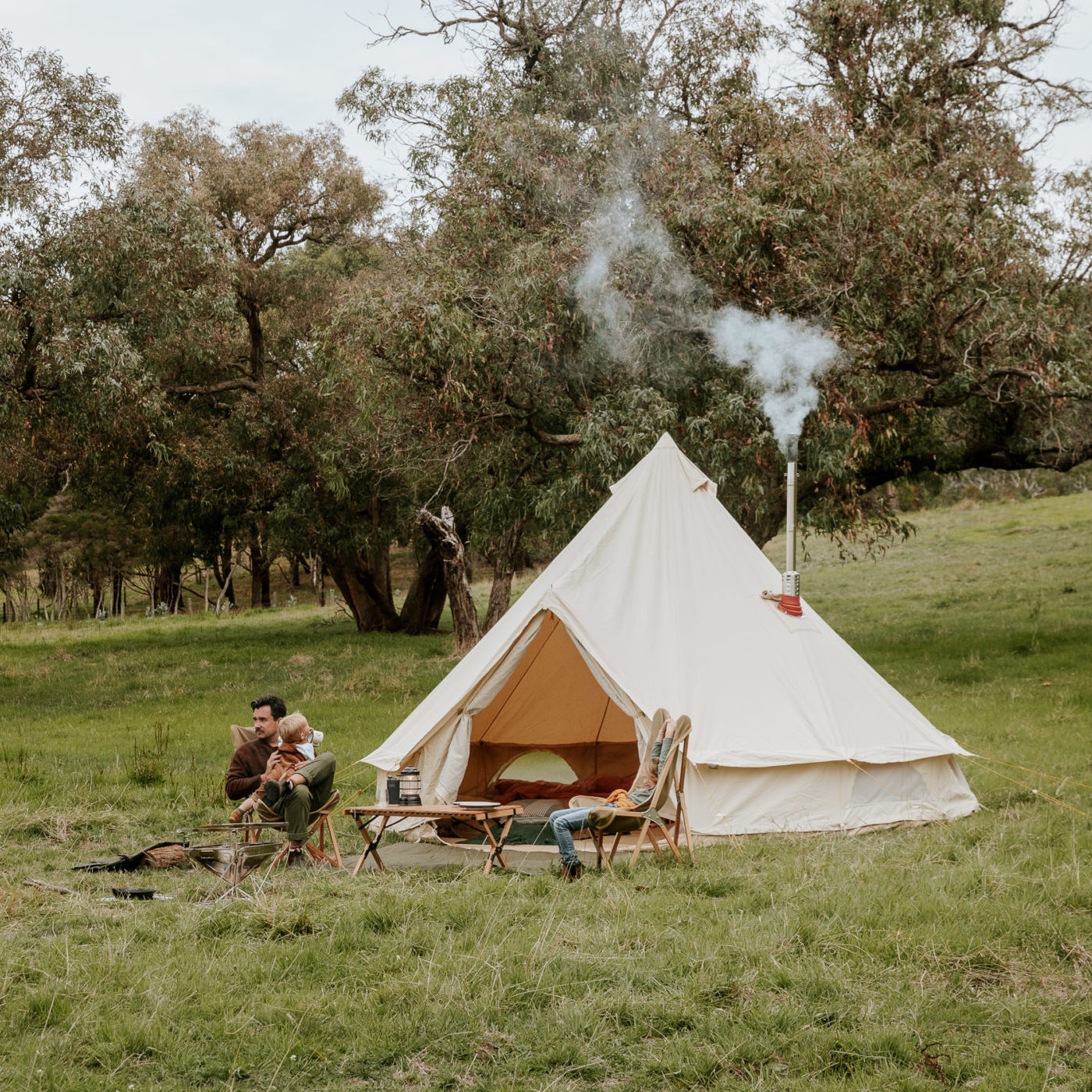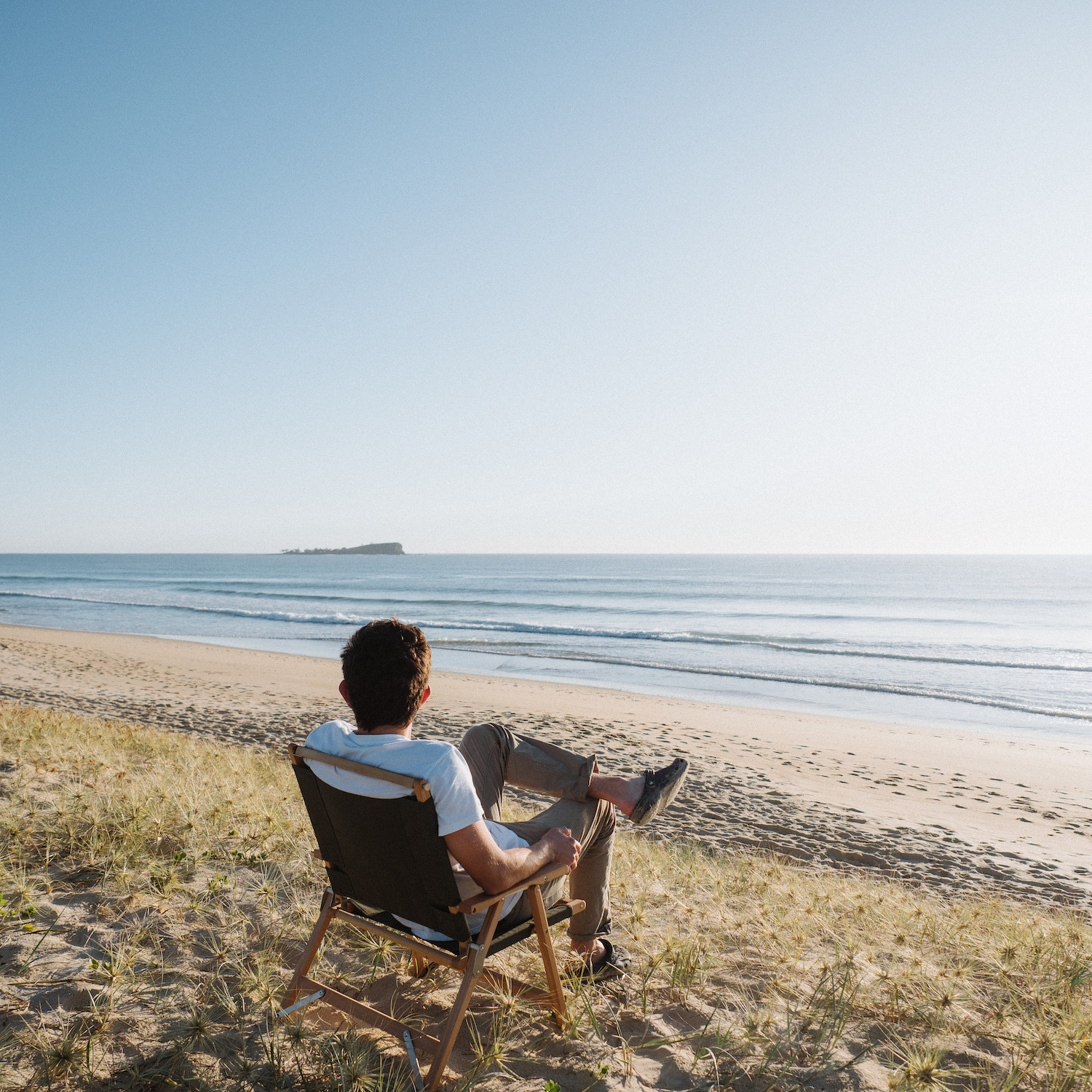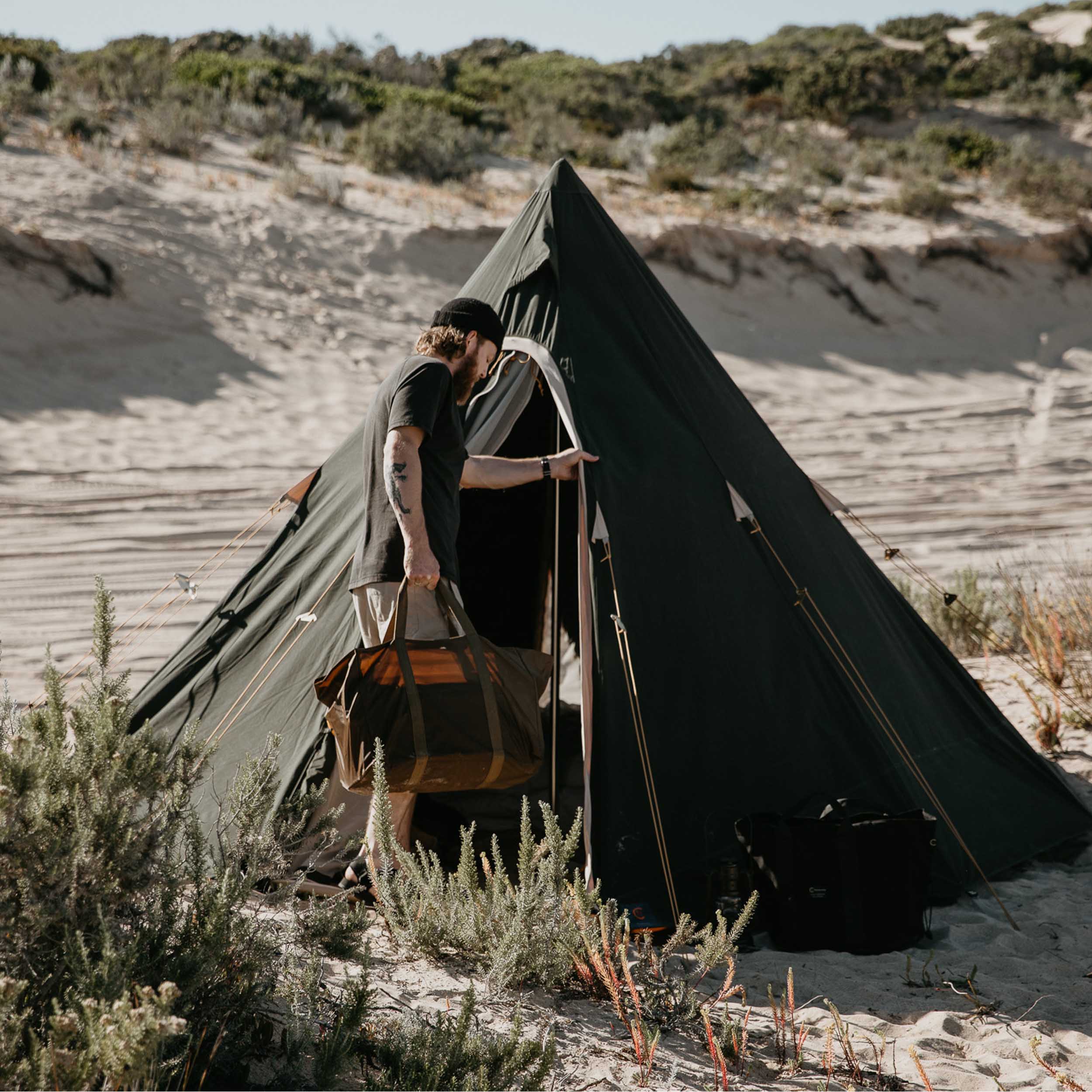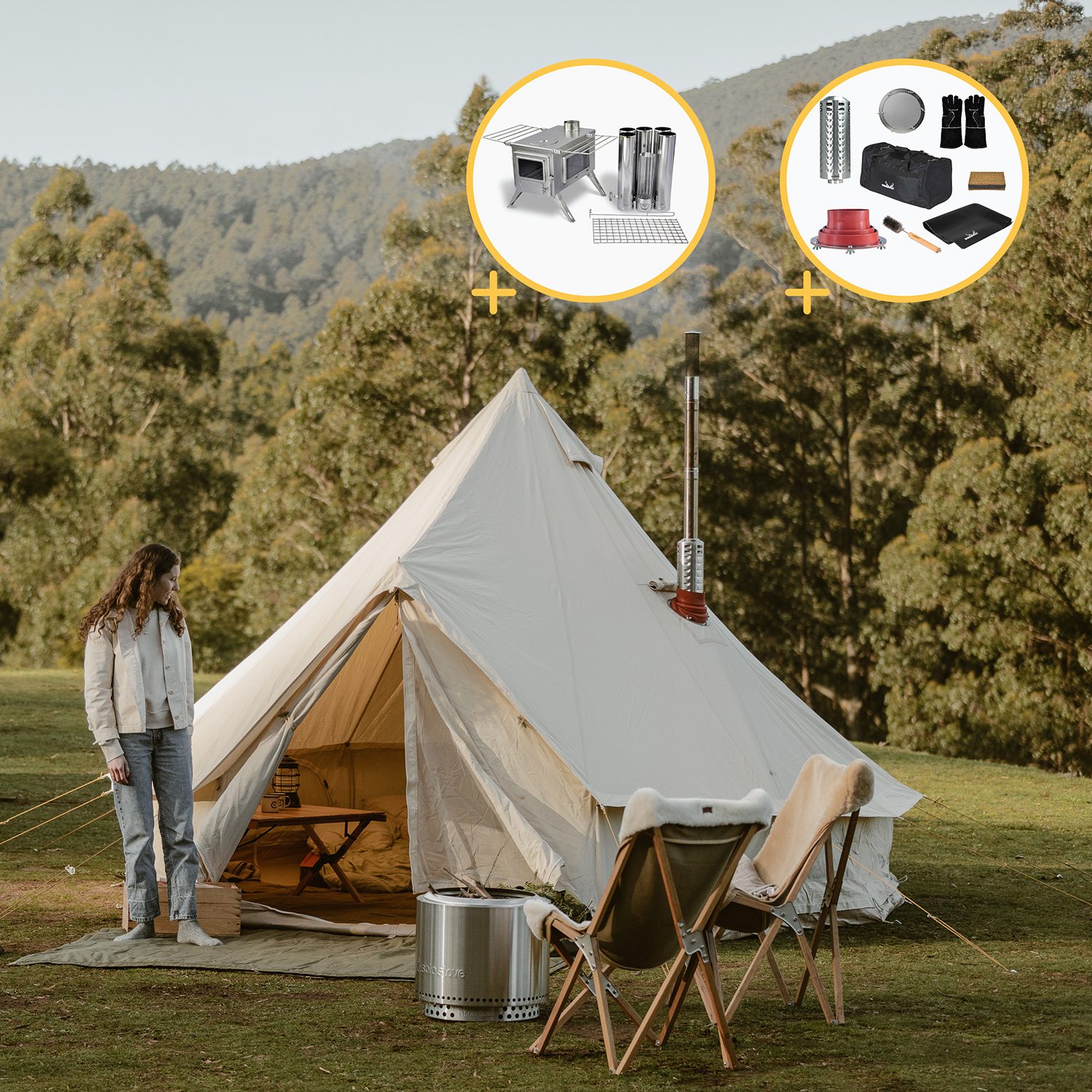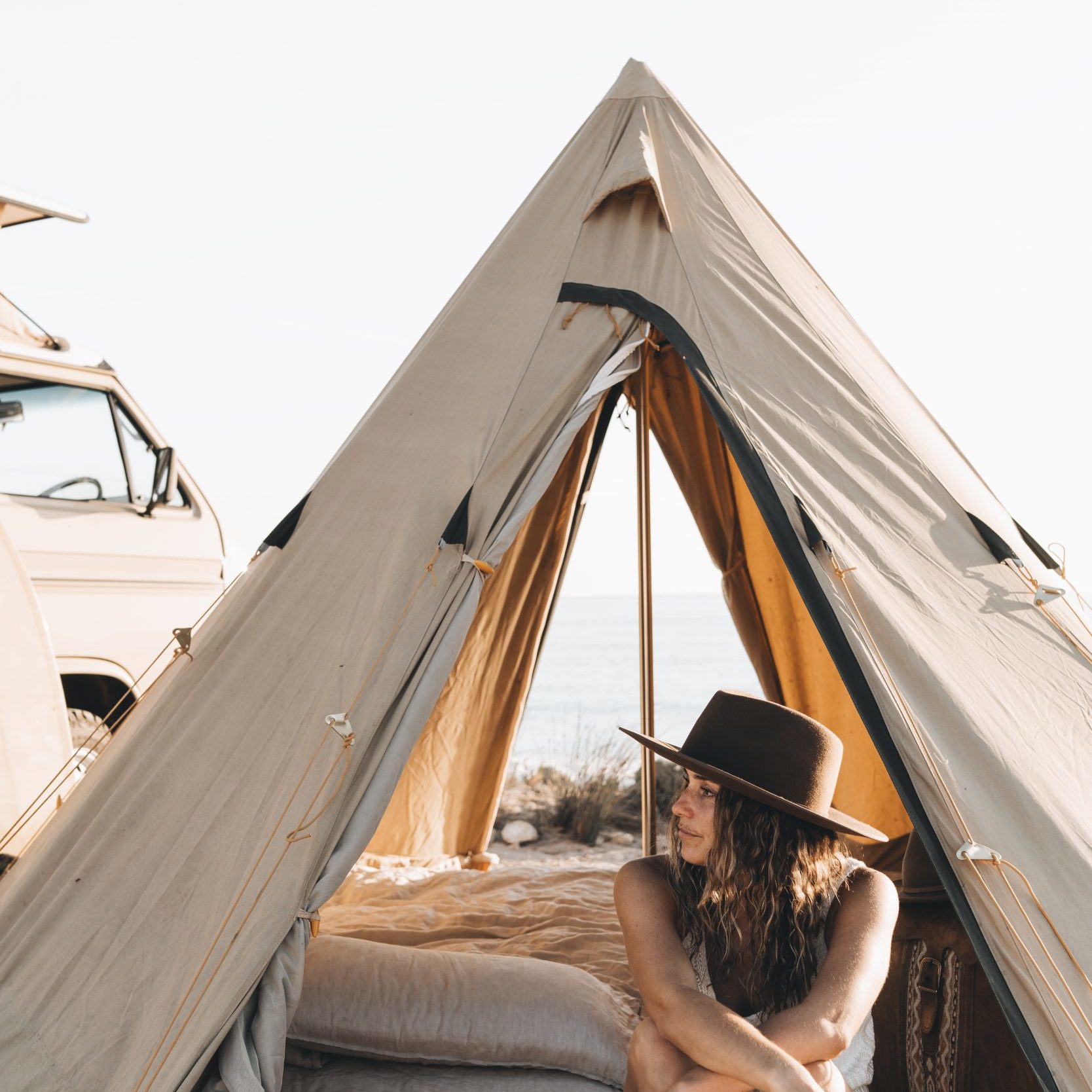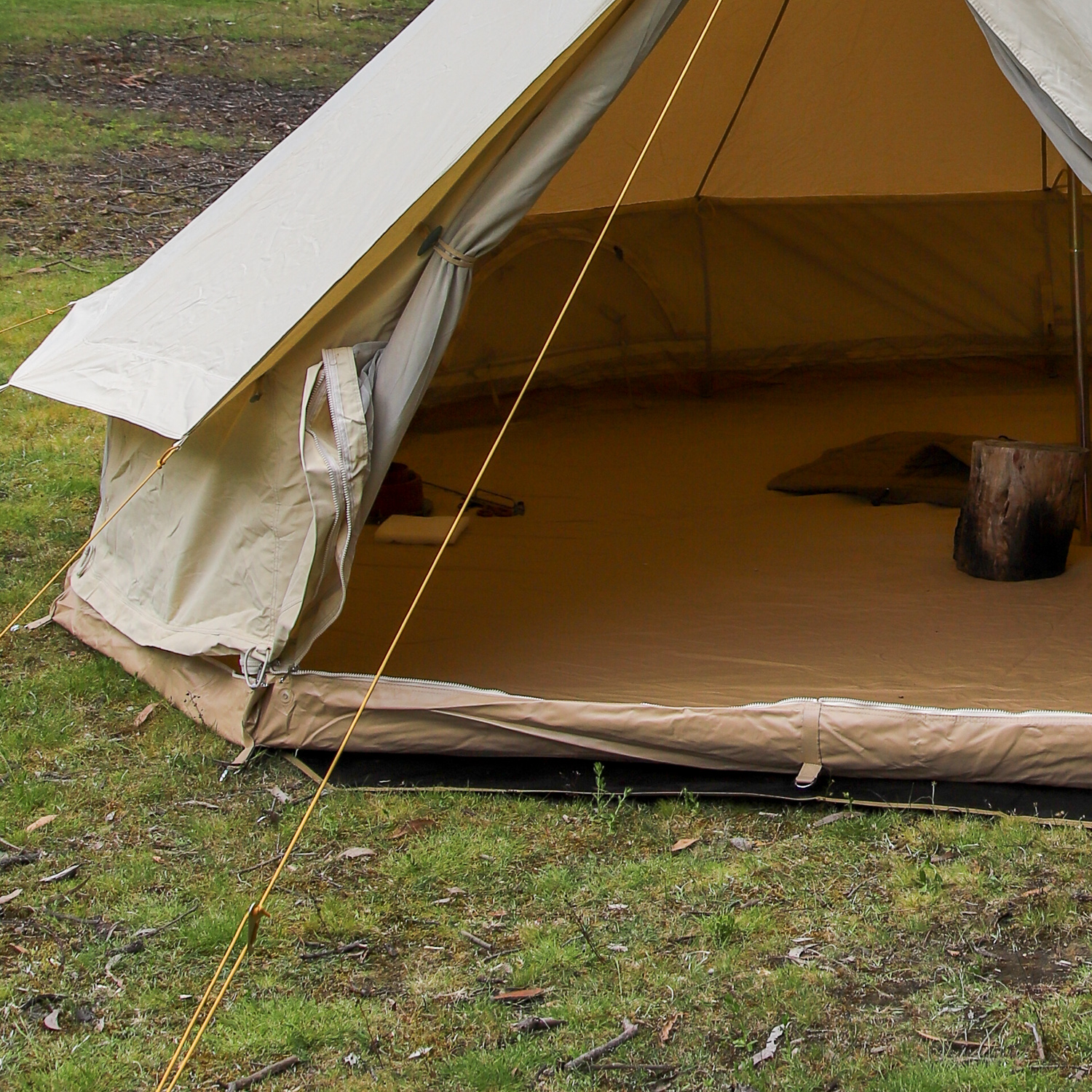 Homecamp Bell Tent kitted our with a Winnerwell Stove
Homecamp Bell Tent kitted our with a Winnerwell Stove
It’s easy to see why bell tents have become an increasingly popular choice for campers in Australia, providing a unique, stylish and oh-so-comfy camping experience that makes getting out into nature a joy. If you’re considering purchasing a bell tent for your next outdoor adventure, there are several key things to keep in mind to ensure that you make the most of your investment – because let’s face it, you want your tent to last for many more adventures.
Below we’ll cover everything you need to know about bell tents, from choosing the right size bell tent to setting it up, and kitting it out with the right accessories.
Let’s start with the basics. What is a bell tent?
The bell tent is a circular canvas tent with a single 2-3-metre supporting pole in the centre. Its bell-like shape is created with tension from guy ropes around its circumference. Also often referred to as yurts and ‘glamping tents’ they are designed to provide ample space (you can fit multiple beds/tables and gear inside depending on the size) and protection from the elements while offering a cosy camping experience. A gorgeous looking tent that is also robust against the elements, it’s worth considering a bell tent for your next camping trip.
Choosing the right size bell tent
When selecting a bell tent, it’s important to consider the number of people who will be sleeping in it. Bell tents come in a variety of sizes, 3m up to 7m! At Homecamp we stock 4m, 4.5m and 5m bell tents. Be sure to consider the number of people who will be camping with you, as well as any additional gear and equipment you’ll need to bring, whether or not you want to use a stove inside etc when choosing the right size for your needs. You can read our handy bell tent size guide here, or check out the image below.
Sidebar
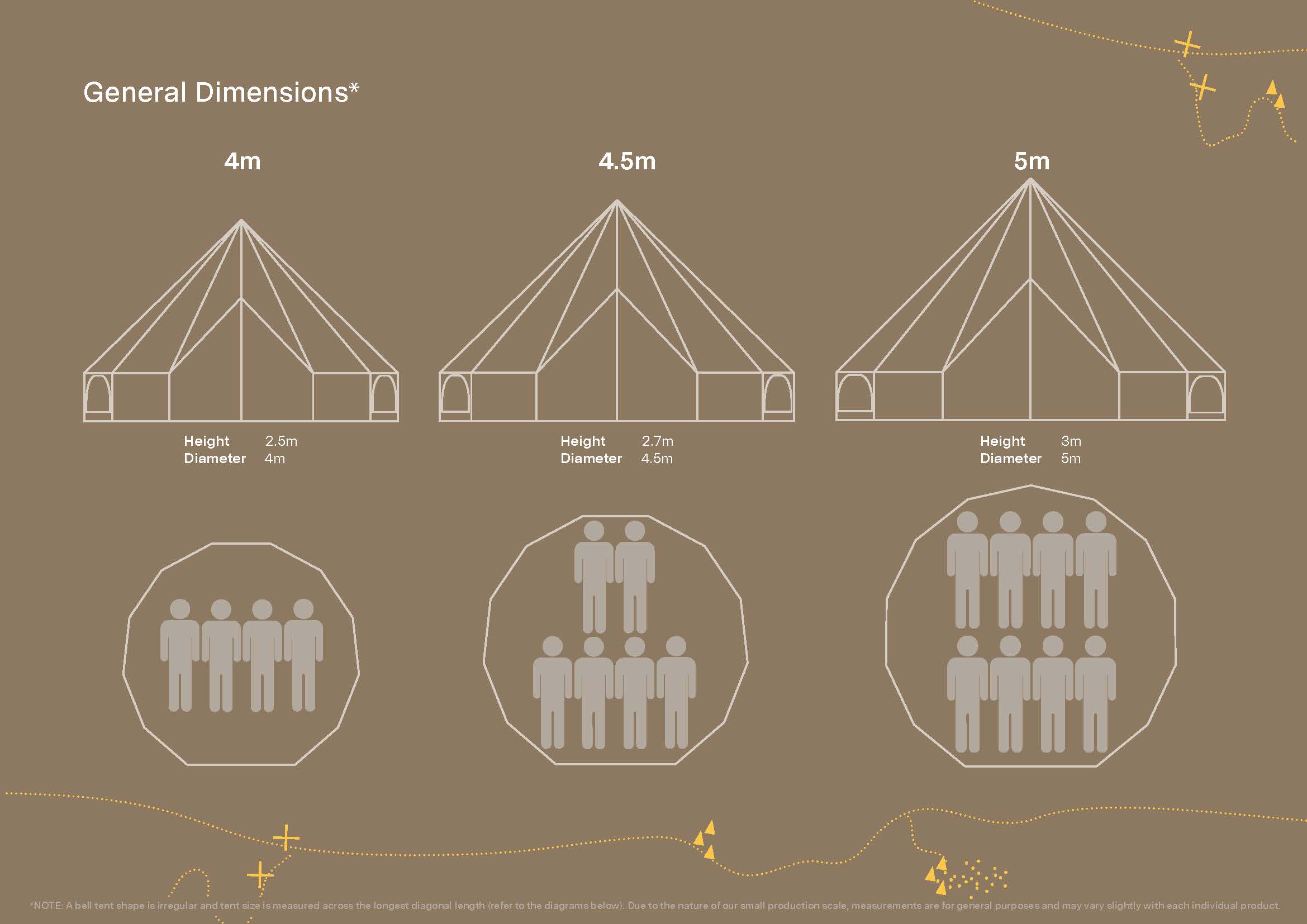 Homecamp Bell Tent Size Guide
Homecamp Bell Tent Size Guide
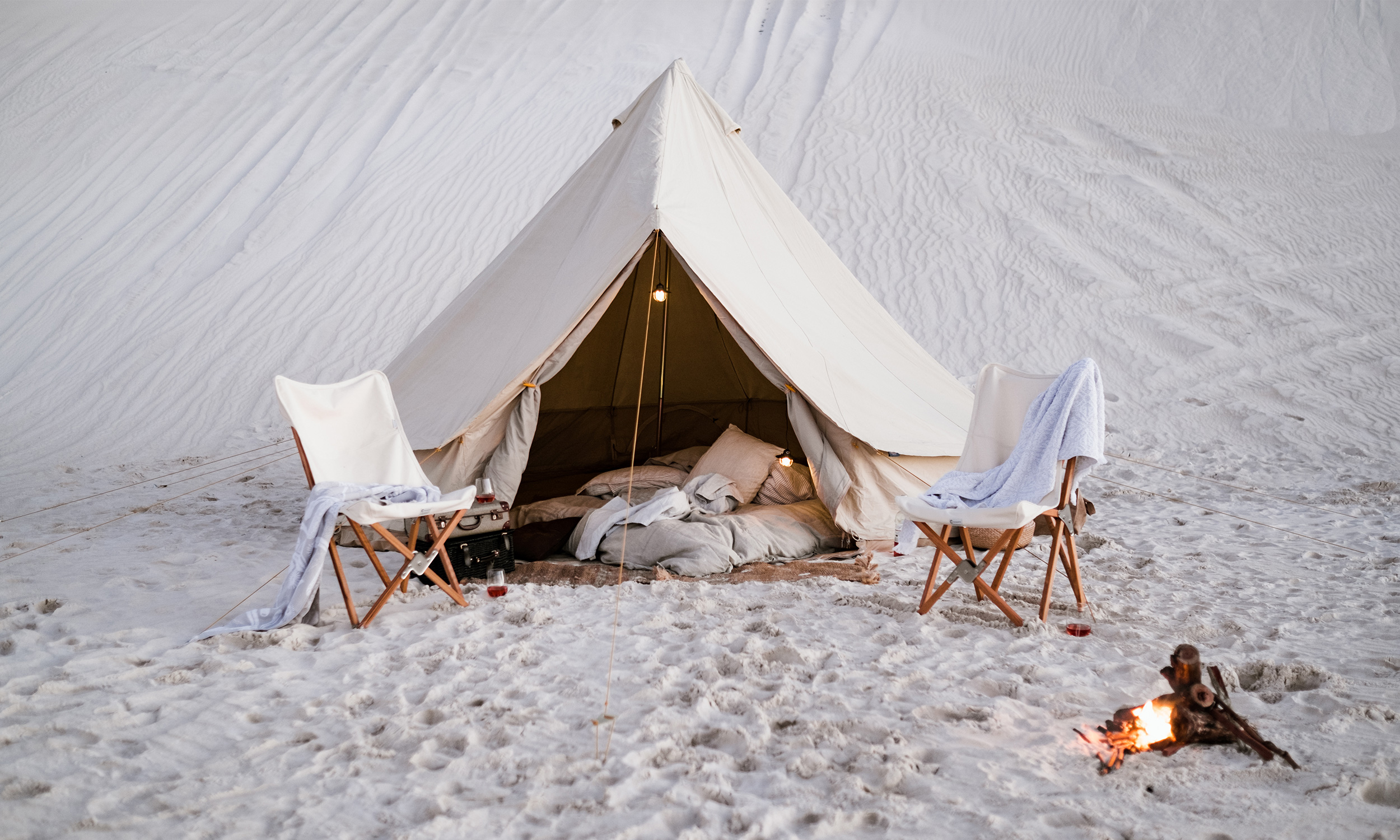 Homecamp Bell Tent in the dunes in WA
Homecamp Bell Tent in the dunes in WA
Bell tent naterials and durability
When choosing a bell tent, it’s important to consider the quality of materials and construction to ensure that you get the protection and durability you need.
Here are some factors to consider:
1. Canvas Quality
Look for a heavy-duty canvas that is high-quality, weatherproof, and breathable. This will ensure that your tent is durable against wear and tear, protects you from the elements, and allows for proper ventilation.
Canvas is the single biggest expense for tent manufacturing and the quality of the canvas is closely connected to the price of the tent. You will find some brands sell 100% cotton tents but in our experience this is not recommended for any serious camping with too many issues and not enough advantages. We recommend a canvas with a mix of cotton and polyester…
Australia has some of the world’s most extreme weather conditions and terrains, and there are many advantages of having a polyester fibre woven into a cotton canvas base. The polyester in the weave means that the canvas is much more hard-wearing, less prone to snagging and tearing, easier to clean and quicker to dry. Cotton/poly canvas has much less shrinkage than 100% cotton. The canvas is breathable, but takes on less water and therefore is much more resistant to mould and mildew than a pure cotton canvas.
Canvas comes in different weights measured by GSM (Grams per Square Metre). The industry standard for large tents is between 8oz and 12oz canvas – between 260 and 400 GSM.
2. Stitching:
Make sure the stitching is tight and reinforced, especially at stress points like the corners and entrance. Look for double-stitching for added durability.
3. Zippers:
High-quality zippers are essential for a sturdy and reliable tent. Look for heavy-duty zippers that are easy to operate and rust-resistant.
4. Flooring:
Consider the type of ground you’ll be camping on and choose a tent with a compatible flooring material. For example, if you’ll be camping on rough terrain, a heavy-duty groundsheet with a raised edge will be necessary.
5. Ventilation:
Ensure that the tent has adequate ventilation, including windows and vents, to prevent condensation and keep you comfortable.
6. Brand Reputation:
Consider the reputation of the brand and their commitment to quality materials and workmanship. Look for reviews and testimonials from other campers to ensure that you’re making a sound investment. We here at Homecamp pride ourselves on designing and using only the highest quality materials in our bell tents, as you will see from our many 5-star reviews.
Sidebar
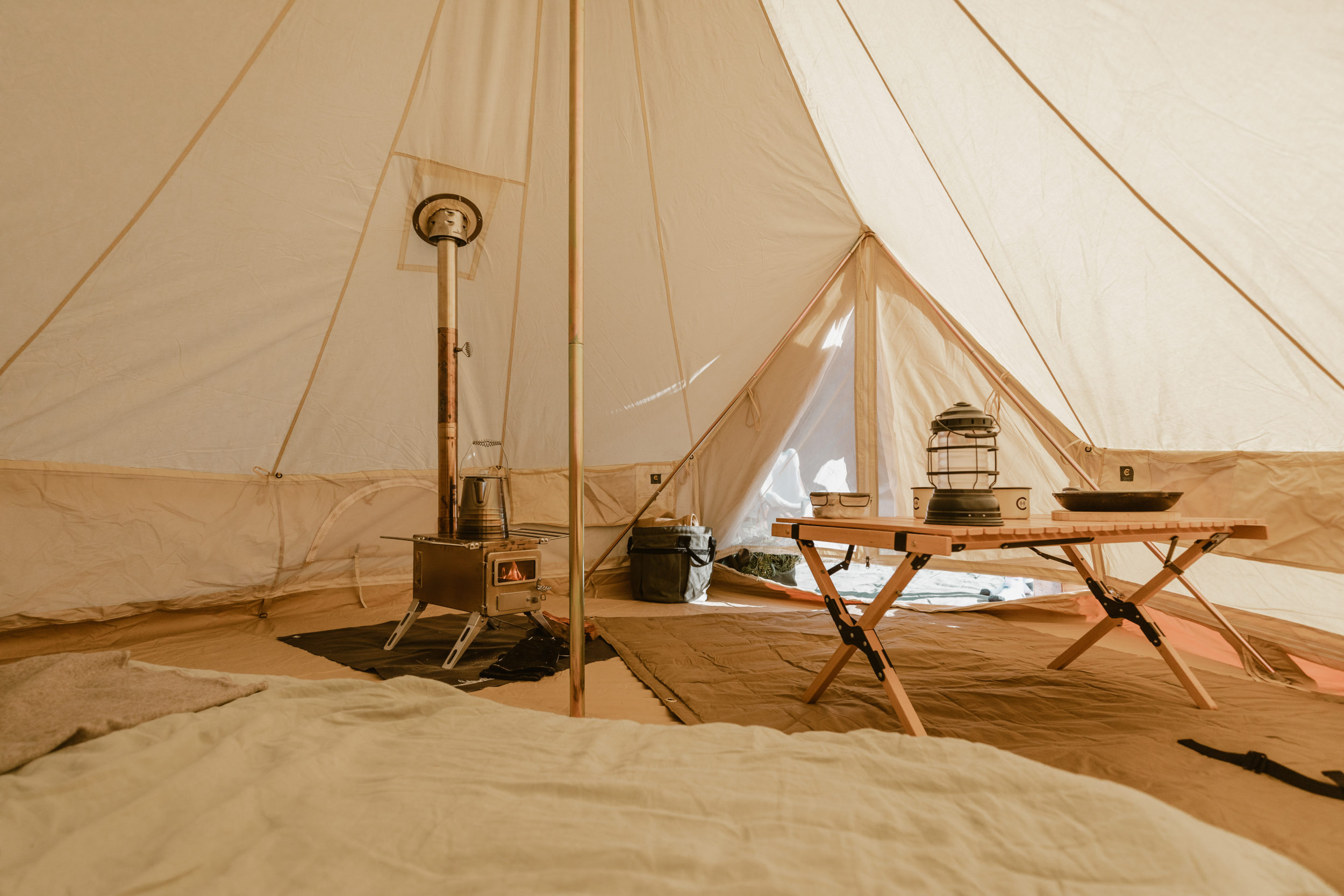 Inside a 4.5m Homecamp Bell Tent
Inside a 4.5m Homecamp Bell Tent
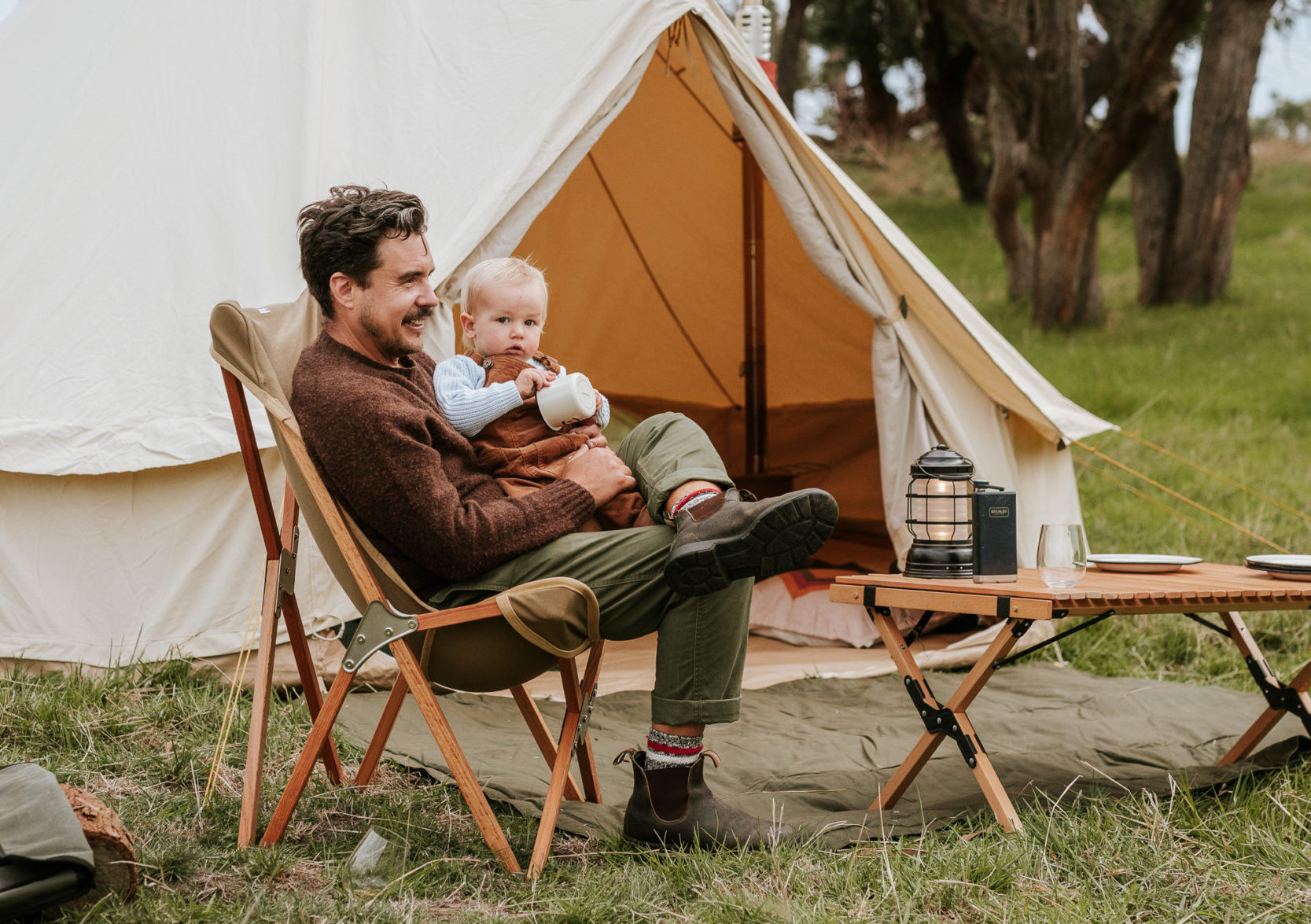 Kicking back in front of a Homecamp Bell Tent
Kicking back in front of a Homecamp Bell Tent
Canvas bell tents vs. nylon bell tents
The vast majority of modern tents are made out of synthetic fabrics such as nylon or polyester (and other derivatives). Some of these synthetic materials are a good choice for camping and hiking because they are cheap to manufacture, lightweight and waterproof. Synthetics can also be durable, low maintenance and quick-to-dry.
There are however, distinct disadvantages to synthetic fabrics: they don’t ‘breathe’, i.e. let air pass in and out of the tent. This causes condensation to form in the inside of the tent, which can lead to annoying drops of water, moisture damage and mould. Compared with canvas, synthetic tents provide little insulation, so they will get hot in warm weather and cold in cool weather. Synthetic tents are also notoriously noisey in wind.
After continued exposure to the sun, synthetics will eventually fade, deteriorate and ultimately end up as landfill. Synthetics are often manufactured in a toxic environment which is a danger to workers and the environment.
Setting up your bell tent
Setting up a bell tent is relatively simple and easy, even for those who have never set up a tent before. While every Homecamp Bell tent comes with details instructions, a basic guide is:
- Find a nice flat spot with good drainage.
- Check for any sharp objects before rolling out your tent.
- Place the groundsheet stakes through the grommet tabs and hammer into the ground. Work your way around the groundsheet, pulling it into shape as you go.
- Assemble the center pole out of the tent, making sure the loop hook is on the top end of the pole (this comes in handy for hanging a lantern). Walk the pole into the center of the tent and position by placing one end centered inside the tent ceiling and walking it upright.
- Install the A-Frame entrance to your tent (this provides a nice entrance) ensuring poles are secure in sockets.
- Adjust the guy lines to designed length.
Accessorising your bell tent
There are a variety of accessories available for bell tents, including practical items such as footprint tarps, awnings, inner tents and covers. There are also tonnes of gear you can style the inside of your tent with to get it feeling super cosy, items such as lanterns, blankets, tables, chairs and bedding. These accessories can enhance the comfort and convenience of your bell tent, making your camping experience even more enjoyable. Shop all bell tent accessories.
Maintenance and care
Proper care and maintenance of your bell tent is essential to ensure its longevity and performance. Ensuring it is properly weathered (more on that here), regular cleaning and proper storage (sweeping it out before you pack it away, and not leaving it wet inside its bag) can help to extend the life of your tent and keep it in great condition for years to come. Whether you’re planning a weekend camping trip or a longer excursion, taking care of your bell tent will ensure that it is always ready when you are.
Camping in a bell tent
Bell tent camping provides a unique and exciting experience, offering ample space (there’s nothing better than standing up and walking around inside your tent!), protection from the elements, and opportunities for outdoor adventures. Suited to car camping (due to the size and weight of the tent) it makes for the perfect base camp whatever the adventure, be it hiking, a weekend down the coast with the family or a week-long Easter camping setup in the bush, it’s worth discovering how a bell tent could work for you.
So why not take the next step and explore the world of bell tents?
Browse our collection of bell tents for sale. At Homecamp, we are dedicated to providing the best quality bell tents available in Australia, ensuring that your camping experience is safe, comfortable, and unforgettable.
Start planning your next camping adventure today!
Sidebar
 Fun for all ages with a Homecamp Bell Tent
Fun for all ages with a Homecamp Bell Tent



